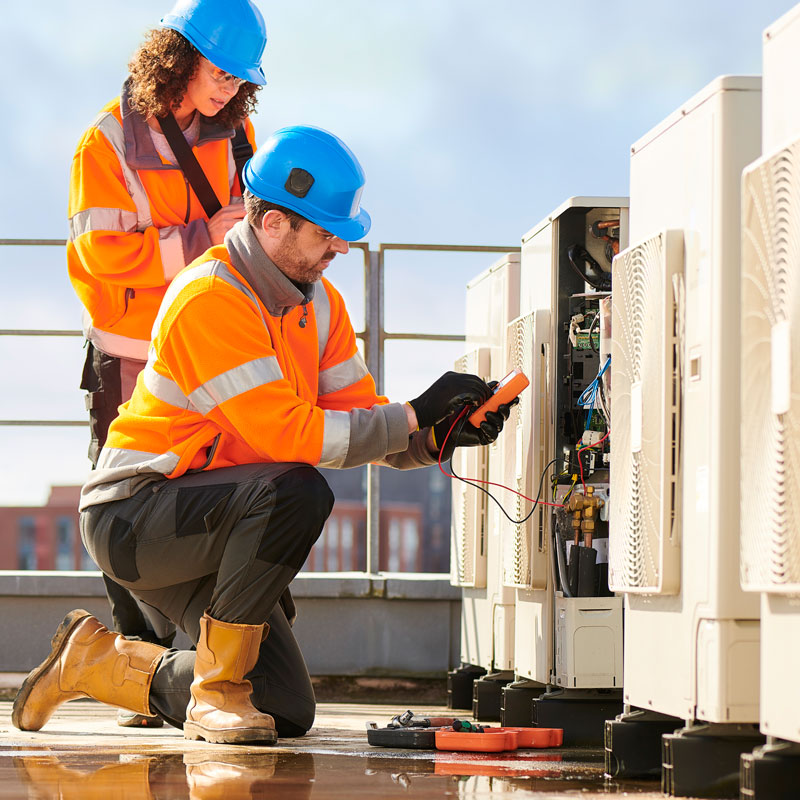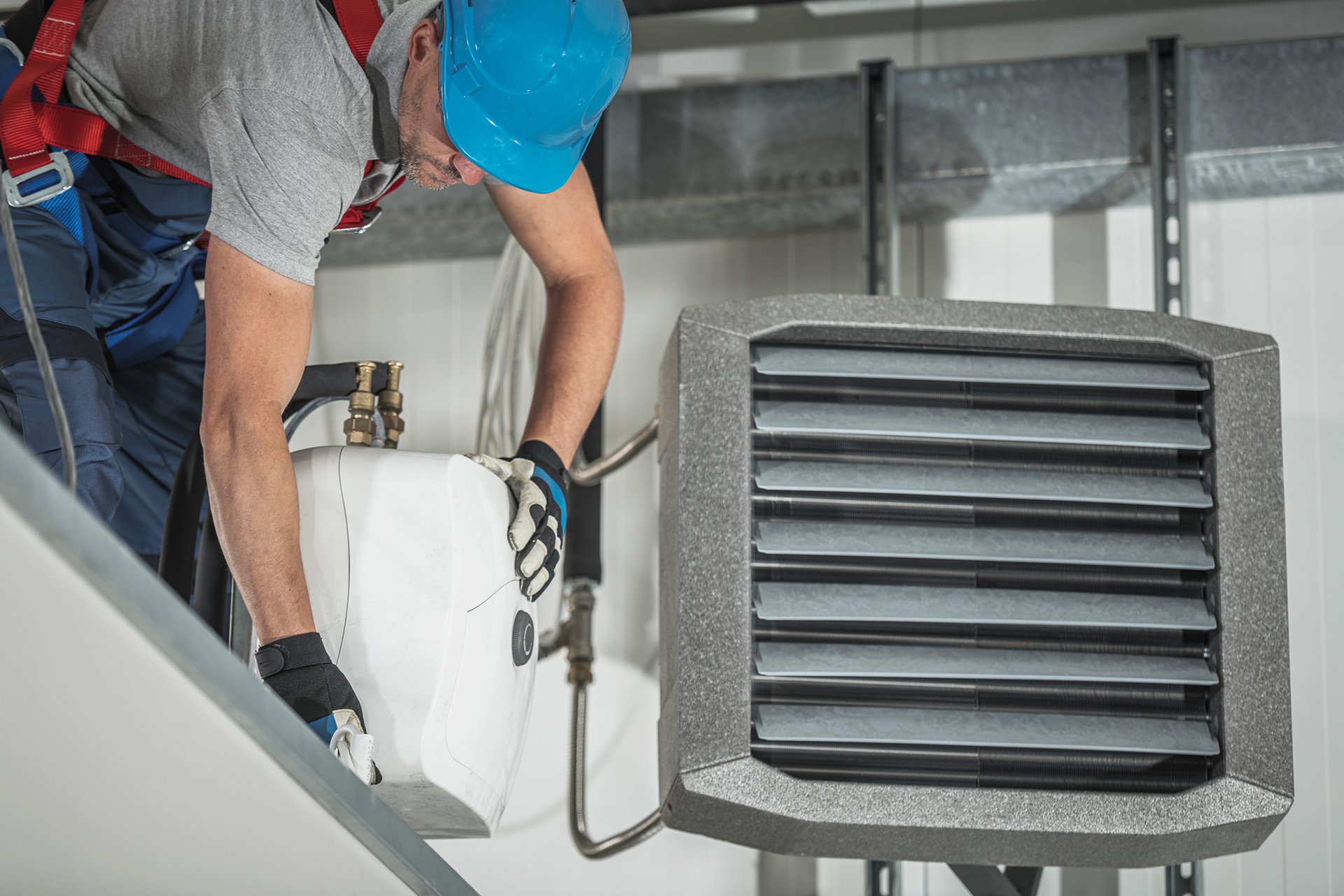How to Know It's Time for a furnace replacement
How to Know It's Time for a furnace replacement
Blog Article
Just How a Warmth Pump and Heating System Collaborate to Optimize Your Home's Heating Efficiency
Recognizing how a heat pump and furnace collaborate is essential for home owners looking for efficient heating remedies. Each system has its strengths, supplying a balanced strategy to home comfort. The warmth pump masters modest temperature levels, while the heater delivers fast warmth during severe cold. This harmony not just reduces energy costs but additionally improves the life expectancy of both devices. What variables influence this partnership, and how can property owners optimize their benefits?
Recognizing Warmth Pumps: Just How They Function
Although many individuals may be not familiar with their internal workings, warmth pumps play an important function in modern-day furnace. These tools operate by transferring warm from one place to one more, utilizing the concepts of thermodynamics. In cooler months, a warmth pump removes warmth from the outside air, ground, or water, and transfers it inside to heat the home. On the other hand, throughout warmer months, it can reverse the process, acting as an air conditioning unit by getting rid of warm from inside to the outside.Heat pumps contain an evaporator, growth, compressor, and condenser valve. The cooling agent within the system soaks up warmth as it vaporizes at reduced temperatures and stress. The compressor then raises the pressure and temperature of the refrigerant, permitting it to release heat as it condenses. This efficient process can considerably decrease power intake contrasted to traditional home heating methods, making heatpump a lasting option for environment control in homes.
The Duty of Heaters in Home Home Heating
Furnaces play a necessary role in home heating by providing a reliable source of warmth during the colder months. They run by creating warm via combustion or electric resistance, dispersing it throughout the home using air ducts or radiant systems. The performance of a furnace is often determined by its Annual Gas Application Efficiency (AFUE) rating, which indicates just how successfully the device converts fuel right into heat.Furnaces can make use of various energy sources, including all-natural gas, propane, oil, or electrical power, permitting home owners to pick the most suitable alternative for their needs. Unlike heatpump, which may struggle in severe cold, heating systems keep regular efficiency, making certain that interior temperature levels stay comfortable despite exterior conditions. In addition, contemporary heating systems often come furnished with advanced modern technology, such as clever thermostats and variable-speed blowers, enhancing their performance and responsiveness. This flexibility makes heaters an important part in all-inclusive home heating strategies.

Benefits of Making Use Of Both Equipments With Each Other
Incorporating the staminas of both heaters and heatpump can result in a much more effective and efficient home heating solution. Using both systems allows house owners to make use of the heatpump's power effectiveness throughout milder temperatures while counting on the heating system for even more severe cold conditions. This twin method can considerably minimize power costs, as warmth pumps eat less electrical energy than typical home heating techniques when temperatures are moderate.Additionally, using both systems with each other can boost comfort degrees in the home. Warmth pumps can provide regular, also home heating, while furnaces can quickly elevate ambient temperatures when required. The assimilation of both systems can extend the life-span of equipment by minimizing wear and tear on each device, as they share the work. Eventually, home owners can delight in a balanced, affordable heating option that changes seamlessly to varying climate problems, making certain a cozy and inviting home throughout the winter season.
Just How Heat Pumps and Furnaces Complement Each Various Other
They develop a complementary heating system that makes the most of efficiency and convenience when home owners integrate warm pumps and heaters. Heatpump operate by moving heat from the outdoors air or ground, making them very effective in moderate environments. They stand out during milder temperature levels, providing affordable heating. Conversely, heaters generate warmth with combustion or electrical resistance, delivering solid, immediate heat during severe cold conditions.The combination of these two systems enables dynamic changes based upon temperature level variations. During warmer months or milder winter season days, the heatpump can take the lead, preserving energy and minimizing costs. As temperatures drop, the furnace can perfectly involve, making sure regular heat throughout the home. This synergy not only enhances energy use yet likewise enhances the life expectancy of both systems, as each device runs within more information its perfect performance variety. Together, they produce a balanced atmosphere that adjusts to varying environment needs.
Optimizing Efficiency: Tips for Homeowners
Home owners can boost their home heating effectiveness with numerous practical methods. Establishing a normal maintenance schedule, incorporating clever thermostat technology, and implementing effective insulation and sealing solutions are vital actions. These measures not just boost comfort however also decrease power expenses.
Regular Upkeep Schedule
To assure maximum home heating efficiency, establishing a regular maintenance schedule is vital for any home. House owners must focus on regular examinations of both heatpump and heaters to identify peak performance. This consists of altering air filters every one to 3 months, as blocked filters can greatly decrease effectiveness. Additionally, scheduling expert maintenance at least annually enables technicians to identify and deal with prospective problems before they escalate. Homeowners ought to additionally cleanse the warmth pump's outdoor unit to stop particles accumulation that can impede air movement. By adhering to a normal upkeep schedule, home owners not only improve their furnace' efficiency but likewise extend their lifespan, bring about greater convenience and decreased energy costs throughout the chillier months.
Smart Thermostat Integration
Integrating a wise thermostat right into a home furnace can greatly improve energy efficiency, particularly as it enables specific control over temperature level setups. These devices can learn the home owner's routine and preferences, immediately adjusting the temperature to maximize comfort while reducing power use. my sources They can reduce heating throughout times when the home is vacant, reducing unneeded intake. Lots of smart thermostats also give real-time power usage information, making it possible for house owners to make enlightened decisions concerning their home heating routines. Furthermore, remote gain access to through mobile phone applications permits users to adjust settings from anywhere, making sure the home is cozy upon return. Overall, wise thermostat integration not just improves comfort however considerably adds to energy cost savings and efficiency.
Insulation and Securing Solutions
Smart thermostats play a crucial role in power performance, however their efficiency can be considerably enhanced by correct insulation and securing options. Property owners must prioritize insulating walls, floors, and attics to reduce heat loss. High-quality insulation materials, such as spray foam or fiberglass, can considerably improve thermal resistance. Additionally, securing spaces around doors, home windows, and air ducts protects against cool air seepage and warmth escape. Weatherstripping and caulking work methods for attending to these leaks - furnace replacement. Normal examinations for air leakages, in addition to the use of blower door examinations, can assist recognize issue locations. By spending in insulation and sealing, home owners can maximize the efficiency of their home heating systems, ultimately bring about minimized energy consumption and reduced energy expenses
Common Myths Concerning Warm Pumps and Furnaces
What misunderstandings surround warm pumps and heating systems? Several individuals erroneously think that heatpump are inefficient in cooler climates. In reality, contemporary heat pumps are designed to run successfully even in low temperature levels, giving dependable home heating throughout wintertime. One more common myth is that heating systems are constantly more efficient than warmth pumps. However, this depends upon the particular power resources and performance scores of the units in inquiry. Some might also believe that using both systems all at once is unneeded, however actually, this combination can optimize home heating effectiveness, especially during extreme weather. Additionally, individuals often think that warm pumps call for continuous upkeep, when truthfully, they have similar maintenance needs to typical furnace. By exposing these misconceptions, house owners can make even more informed decisions concerning their heating options, inevitably causing boosted comfort and energy efficiency in their homes.
Maintenance Factors To Consider for Combined Equipments

Often Asked Inquiries
Can Heat Pumps Job Effectively in Extremely Cold Climates?
Warm pumps can have a hard time in incredibly cold environments because of reduced performance and heat removal constraints. Advancements in technology have led to versions created for far better efficiency in such problems, enhancing their feasibility in rough environments.
How Much Time Do Warm Pumps and Furnaces Usually Last?
Heatpump usually last 15 to twenty years, while heating systems have a life-span of 15 to 30 years. Regular upkeep can prolong their long life, ensuring efficient operation and lowering the need for early replacements.

What Is the Ordinary Expense of Installing Both Solutions?
The ordinary price of installing both a warmth pump and a heater usually ranges in between $5,000 to $10,000 - heat pump installation ooltewah tn. Elements affecting this expense consist of system size, installment complexity, and regional labor rates
Are There Tax Incentives for Making Use Of Energy-Efficient Heating Equipments?
Many property owners ask about tax motivations for energy-efficient heater. Different federal and state programs frequently use debts or refunds, urging the fostering of lasting modern technologies to minimize energy usage and promote environmental duty.
Exactly how Do I Pick the Right Dimension Heatpump and Heater?
Selecting the best dimension heatpump and heater includes determining the home's square this website video, considering insulation high quality, and reviewing local environment. Consulting a professional can guarantee optimal system efficiency and power efficiency based on details demands. heat pump service. Comprehending just how a warm pump and furnace job with each other is essential for home owners looking for effective home heating services. In cooler months, a warm pump extracts heat from the outdoors air, ground, or water, and transfers it inside your home to heat the living space. When home owners integrate warmth pumps and heating systems, they create a complementary heating system that takes full advantage of performance and comfort. Warm pumps operate by moving warm from the outside air or ground, making them very effective in moderate environments. Heat pumps can struggle in very cold climates due to minimized effectiveness and warm removal restrictions
Report this page